Zonglin Yang
Accelerating RLHF Training with Reward Variance Increase
May 29, 2025Abstract:Reinforcement learning from human feedback (RLHF) is an essential technique for ensuring that large language models (LLMs) are aligned with human values and preferences during the post-training phase. As an effective RLHF approach, group relative policy optimization (GRPO) has demonstrated success in many LLM-based applications. However, efficient GRPO-based RLHF training remains a challenge. Recent studies reveal that a higher reward variance of the initial policy model leads to faster RLHF training. Inspired by this finding, we propose a practical reward adjustment model to accelerate RLHF training by provably increasing the reward variance and preserving the relative preferences and reward expectation. Our reward adjustment method inherently poses a nonconvex optimization problem, which is NP-hard to solve in general. To overcome the computational challenges, we design a novel $O(n \log n)$ algorithm to find a global solution of the nonconvex reward adjustment model by explicitly characterizing the extreme points of the feasible set. As an important application, we naturally integrate this reward adjustment model into the GRPO algorithm, leading to a more efficient GRPO with reward variance increase (GRPOVI) algorithm for RLHF training. As an interesting byproduct, we provide an indirect explanation for the empirical effectiveness of GRPO with rule-based reward for RLHF training, as demonstrated in DeepSeek-R1. Experiment results demonstrate that the GRPOVI algorithm can significantly improve the RLHF training efficiency compared to the original GRPO algorithm.
MOOSE-Chem2: Exploring LLM Limits in Fine-Grained Scientific Hypothesis Discovery via Hierarchical Search
May 25, 2025



Abstract:Large language models (LLMs) have shown promise in automating scientific hypothesis generation, yet existing approaches primarily yield coarse-grained hypotheses lacking critical methodological and experimental details. We introduce and formally define the novel task of fine-grained scientific hypothesis discovery, which entails generating detailed, experimentally actionable hypotheses from coarse initial research directions. We frame this as a combinatorial optimization problem and investigate the upper limits of LLMs' capacity to solve it when maximally leveraged. Specifically, we explore four foundational questions: (1) how to best harness an LLM's internal heuristics to formulate the fine-grained hypothesis it itself would judge as the most promising among all the possible hypotheses it might generate, based on its own internal scoring-thus defining a latent reward landscape over the hypothesis space; (2) whether such LLM-judged better hypotheses exhibit stronger alignment with ground-truth hypotheses; (3) whether shaping the reward landscape using an ensemble of diverse LLMs of similar capacity yields better outcomes than defining it with repeated instances of the strongest LLM among them; and (4) whether an ensemble of identical LLMs provides a more reliable reward landscape than a single LLM. To address these questions, we propose a hierarchical search method that incrementally proposes and integrates details into the hypothesis, progressing from general concepts to specific experimental configurations. We show that this hierarchical process smooths the reward landscape and enables more effective optimization. Empirical evaluations on a new benchmark of expert-annotated fine-grained hypotheses from recent chemistry literature show that our method consistently outperforms strong baselines.
MOOSE-Chem3: Toward Experiment-Guided Hypothesis Ranking via Simulated Experimental Feedback
May 23, 2025



Abstract:Hypothesis ranking is a crucial component of automated scientific discovery, particularly in natural sciences where wet-lab experiments are costly and throughput-limited. Existing approaches focus on pre-experiment ranking, relying solely on large language model's internal reasoning without incorporating empirical outcomes from experiments. We introduce the task of experiment-guided ranking, which aims to prioritize candidate hypotheses based on the results of previously tested ones. However, developing such strategies is challenging due to the impracticality of repeatedly conducting real experiments in natural science domains. To address this, we propose a simulator grounded in three domain-informed assumptions, modeling hypothesis performance as a function of similarity to a known ground truth hypothesis, perturbed by noise. We curate a dataset of 124 chemistry hypotheses with experimentally reported outcomes to validate the simulator. Building on this simulator, we develop a pseudo experiment-guided ranking method that clusters hypotheses by shared functional characteristics and prioritizes candidates based on insights derived from simulated experimental feedback. Experiments show that our method outperforms pre-experiment baselines and strong ablations.
ResearchBench: Benchmarking LLMs in Scientific Discovery via Inspiration-Based Task Decomposition
Mar 27, 2025



Abstract:Large language models (LLMs) have demonstrated potential in assisting scientific research, yet their ability to discover high-quality research hypotheses remains unexamined due to the lack of a dedicated benchmark. To address this gap, we introduce the first large-scale benchmark for evaluating LLMs with a near-sufficient set of sub-tasks of scientific discovery: inspiration retrieval, hypothesis composition, and hypothesis ranking. We develop an automated framework that extracts critical components - research questions, background surveys, inspirations, and hypotheses - from scientific papers across 12 disciplines, with expert validation confirming its accuracy. To prevent data contamination, we focus exclusively on papers published in 2024, ensuring minimal overlap with LLM pretraining data. Our evaluation reveals that LLMs perform well in retrieving inspirations, an out-of-distribution task, suggesting their ability to surface novel knowledge associations. This positions LLMs as "research hypothesis mines", capable of facilitating automated scientific discovery by generating innovative hypotheses at scale with minimal human intervention.
LLM4SR: A Survey on Large Language Models for Scientific Research
Jan 08, 2025



Abstract:In recent years, the rapid advancement of Large Language Models (LLMs) has transformed the landscape of scientific research, offering unprecedented support across various stages of the research cycle. This paper presents the first systematic survey dedicated to exploring how LLMs are revolutionizing the scientific research process. We analyze the unique roles LLMs play across four critical stages of research: hypothesis discovery, experiment planning and implementation, scientific writing, and peer reviewing. Our review comprehensively showcases the task-specific methodologies and evaluation benchmarks. By identifying current challenges and proposing future research directions, this survey not only highlights the transformative potential of LLMs, but also aims to inspire and guide researchers and practitioners in leveraging LLMs to advance scientific inquiry. Resources are available at the following repository: https://github.com/du-nlp-lab/LLM4SR
Critic-V: VLM Critics Help Catch VLM Errors in Multimodal Reasoning
Dec 02, 2024



Abstract:Vision-language models (VLMs) have shown remarkable advancements in multimodal reasoning tasks. However, they still often generate inaccurate or irrelevant responses due to issues like hallucinated image understandings or unrefined reasoning paths. To address these challenges, we introduce Critic-V, a novel framework inspired by the Actor-Critic paradigm to boost the reasoning capability of VLMs. This framework decouples the reasoning process and critic process by integrating two independent components: the Reasoner, which generates reasoning paths based on visual and textual inputs, and the Critic, which provides constructive critique to refine these paths. In this approach, the Reasoner generates reasoning responses according to text prompts, which can evolve iteratively as a policy based on feedback from the Critic. This interaction process was theoretically driven by a reinforcement learning framework where the Critic offers natural language critiques instead of scalar rewards, enabling more nuanced feedback to boost the Reasoner's capability on complex reasoning tasks. The Critic model is trained using Direct Preference Optimization (DPO), leveraging a preference dataset of critiques ranked by Rule-based Reward~(RBR) to enhance its critic capabilities. Evaluation results show that the Critic-V framework significantly outperforms existing methods, including GPT-4V, on 5 out of 8 benchmarks, especially regarding reasoning accuracy and efficiency. Combining a dynamic text-based policy for the Reasoner and constructive feedback from the preference-optimized Critic enables a more reliable and context-sensitive multimodal reasoning process. Our approach provides a promising solution to enhance the reliability of VLMs, improving their performance in real-world reasoning-heavy multimodal applications such as autonomous driving and embodied intelligence.
MOOSE-Chem: Large Language Models for Rediscovering Unseen Chemistry Scientific Hypotheses
Oct 09, 2024Abstract:Scientific discovery contributes largely to human society's prosperity, and recent progress shows that LLMs could potentially catalyze this process. However, it is still unclear whether LLMs can discover novel and valid hypotheses in chemistry. In this work, we investigate this central research question: Can LLMs automatically discover novel and valid chemistry research hypotheses given only a chemistry research background (consisting of a research question and/or a background survey), without limitation on the domain of the research question? After extensive discussions with chemistry experts, we propose an assumption that a majority of chemistry hypotheses can be resulted from a research background and several inspirations. With this key insight, we break the central question into three smaller fundamental questions. In brief, they are: (1) given a background question, whether LLMs can retrieve good inspirations; (2) with background and inspirations, whether LLMs can lead to hypothesis; and (3) whether LLMs can identify good hypotheses to rank them higher. To investigate these questions, we construct a benchmark consisting of 51 chemistry papers published in Nature, Science, or a similar level in 2024 (all papers are only available online since 2024). Every paper is divided by chemistry PhD students into three components: background, inspirations, and hypothesis. The goal is to rediscover the hypothesis, given only the background and a large randomly selected chemistry literature corpus consisting the ground truth inspiration papers, with LLMs trained with data up to 2023. We also develop an LLM-based multi-agent framework that leverages the assumption, consisting of three stages reflecting the three smaller questions. The proposed method can rediscover many hypotheses with very high similarity with the ground truth ones, covering the main innovations.
ZeroPur: Succinct Training-Free Adversarial Purification
Jun 05, 2024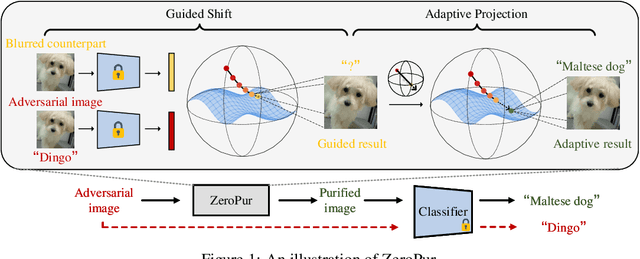

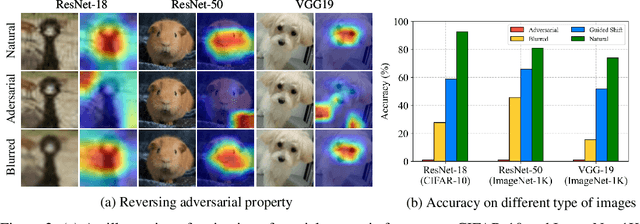

Abstract:Adversarial purification is a kind of defense technique that can defend various unseen adversarial attacks without modifying the victim classifier. Existing methods often depend on external generative models or cooperation between auxiliary functions and victim classifiers. However, retraining generative models, auxiliary functions, or victim classifiers relies on the domain of the fine-tuned dataset and is computation-consuming. In this work, we suppose that adversarial images are outliers of the natural image manifold and the purification process can be considered as returning them to this manifold. Following this assumption, we present a simple adversarial purification method without further training to purify adversarial images, called ZeroPur. ZeroPur contains two steps: given an adversarial example, Guided Shift obtains the shifted embedding of the adversarial example by the guidance of its blurred counterparts; after that, Adaptive Projection constructs a directional vector by this shifted embedding to provide momentum, projecting adversarial images onto the manifold adaptively. ZeroPur is independent of external models and requires no retraining of victim classifiers or auxiliary functions, relying solely on victim classifiers themselves to achieve purification. Extensive experiments on three datasets (CIFAR-10, CIFAR-100, and ImageNet-1K) using various classifier architectures (ResNet, WideResNet) demonstrate that our method achieves state-of-the-art robust performance. The code will be publicly available.
Adaptive Reconvergence-driven AIG Rewriting via Strategy Learning
Dec 22, 2023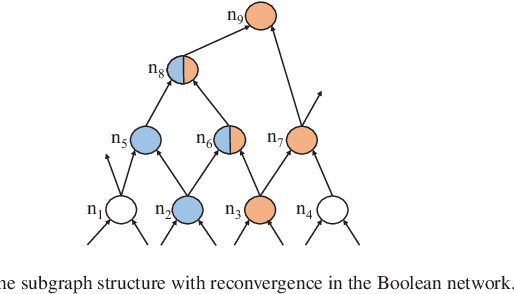
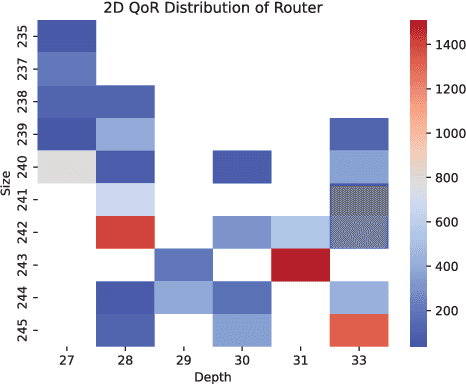

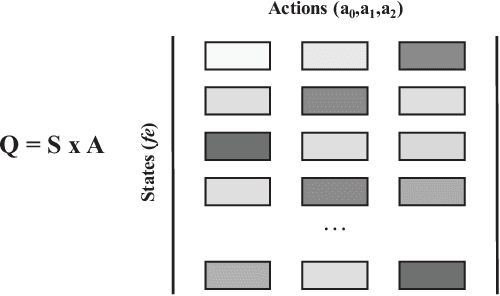
Abstract:Rewriting is a common procedure in logic synthesis aimed at improving the performance, power, and area (PPA) of circuits. The traditional reconvergence-driven And-Inverter Graph (AIG) rewriting method focuses solely on optimizing the reconvergence cone through Boolean algebra minimization. However, there exist opportunities to incorporate other node-rewriting algorithms that are better suited for specific cones. In this paper, we propose an adaptive reconvergence-driven AIG rewriting algorithm that combines two key techniques: multi-strategy-based AIG rewriting and strategy learning-based algorithm selection. The multi-strategy-based rewriting method expands upon the traditional approach by incorporating support for multi-node-rewriting algorithms, thus expanding the optimization space. Additionally, the strategy learning-based algorithm selection method determines the most suitable node-rewriting algorithm for a given cone. Experimental results demonstrate that our proposed method yields a significant average improvement of 5.567\% in size and 5.327\% in depth.
A Survey on Semantic Processing Techniques
Oct 22, 2023Abstract:Semantic processing is a fundamental research domain in computational linguistics. In the era of powerful pre-trained language models and large language models, the advancement of research in this domain appears to be decelerating. However, the study of semantics is multi-dimensional in linguistics. The research depth and breadth of computational semantic processing can be largely improved with new technologies. In this survey, we analyzed five semantic processing tasks, e.g., word sense disambiguation, anaphora resolution, named entity recognition, concept extraction, and subjectivity detection. We study relevant theoretical research in these fields, advanced methods, and downstream applications. We connect the surveyed tasks with downstream applications because this may inspire future scholars to fuse these low-level semantic processing tasks with high-level natural language processing tasks. The review of theoretical research may also inspire new tasks and technologies in the semantic processing domain. Finally, we compare the different semantic processing techniques and summarize their technical trends, application trends, and future directions.
 Add to Chrome
Add to Chrome Add to Firefox
Add to Firefox Add to Edge
Add to Edge